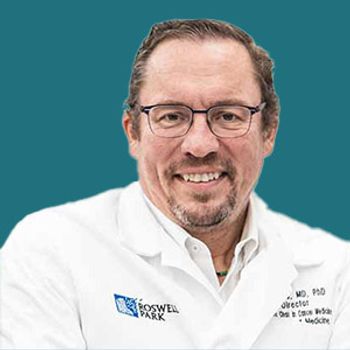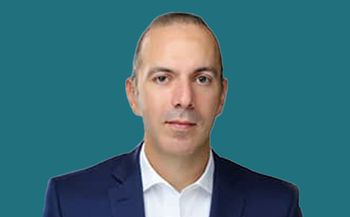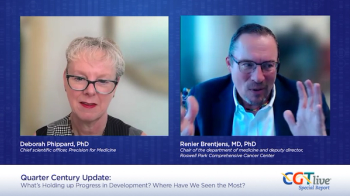
Merit Cudkowicz, MD, on Evaluating Mesenchymal Cell Therapy for ALS
BrainStorm Cell Therapeutics has decided to submit a BLA for NurOwn in ALS following an erratum to a phase 3 trial.
“ALS is such a such a serious illness; you don't want to discard a treatment that might be potentially helpful. That's one of the worst things I think you could do. Maybe 10 years from now or 5 years from now, we might have so many treatments that maybe we wouldn’t need to pursue but I think we're still at the stage where anything that might help, we want to keep pursuing.”
Corrected statistical analyses of a phase 3 clinical trial (NCT03280056) of the mesenchymal cell therapy NurOwnhave revealed a statistically significant improvement on ALSFRS-R scores in participants with early-stage amyotrophic lateral sclerosis (ALS).1 The trial, results of which were published in Muscle and Nerve, previously did not meet its primary endpoint of responder rates on ALSFRS-R scores in all stages of disease progression.
Based off the corrected data, BrainStorm Cell Therapeutics has decided to submit a biologics license application (BLA) for NurOwn, previously advised against by the FDA in 2021.2 CGTLive spoke with Merit Cudkowicz, MD, chief, neurology, and director, Sean M. Healey & AMG Center for ALS, and Julieanne Dorn Professor of Neurology, Harvard Medical School, to learn more about NurOwn and its potential advantages in treating ALS.
"Brainstorm Cell Therapeutics is at a pivotal moment as a company as we finalize the regulatory filing for NurOwn in the treatment of ALS. The continued analysis and the feedback received from the many scientific presentations of NurOwn's phase 3 data have uncovered key insights that furthered our understanding of the product mechanism of action and therapeutic potential and strengthened the conclusions of NurOwn's efficacy," Chaim Lebovits, chief executive officer, BrainStorm, said in a statement. "After carefully considering these learnings, the totality of the evidence from NurOwn's clinical studies, and the feedback received from key opinion leaders and the broader ALS community, we will submit a Biologics License Application to the FDA. We are deeply grateful to the ALS clinical experts, members of the ALS community and faithful investors for their contribution to the development of NurOwn and what it may mean to those living with ALS. Their contributions and commitment made our current progress possible and continue to inspire us as we prepare for the considerable work ahead. We intend to provide additional updates upon learning whether the FDA files our BLA submission."
An erratum was published with the article in Muscle and Nerve that resulted in a statistically significant treatment difference (P = .050) of more than 2 points on ALSFRS-R in the pre-specified efficacy subgroup of participants with a baseline score of at least 35. The original analyses used an efficacy model that unintentionally deviated from the prespecified statiscical analysis plan and the correction employed the correct model. In conclusion, the correction demonstrated that all subgroups with ALSFRS-R baseline scores of at least 26 to 35 showed a statistically significant benefit following treatment with NurOwn (P ≤.050).
REFERENCES
1. BrainStorm Cell Therapeutics announces second quarter 2022 financial results and provides a corporate update. News release. BrainStorm Cell Therapeutics. August 15, 2022. https://ir.brainstorm-cell.com/2022-08-15-BrainStorm-Cell-Therapeutics-Announces-Second-Quarter-2022-Financial-Results-and-Provides-a-Corporate-Update
2. BrainStorm Announces High-Level FDA Feedback on NurOwn® ALS Clinical Development Program. News release. BrainStorm Cell Therapeutics. News release. February 22, 2021. https://ir.brainstorm-cell.com/2021-02-22-BrainStorm-Announces-High-Level-FDA-Feedback-on-NurOwn-R-ALS-Clinical-Development-Program
Newsletter
Stay at the forefront of cutting-edge science with CGT—your direct line to expert insights, breakthrough data, and real-time coverage of the latest advancements in cell and gene therapy.










































